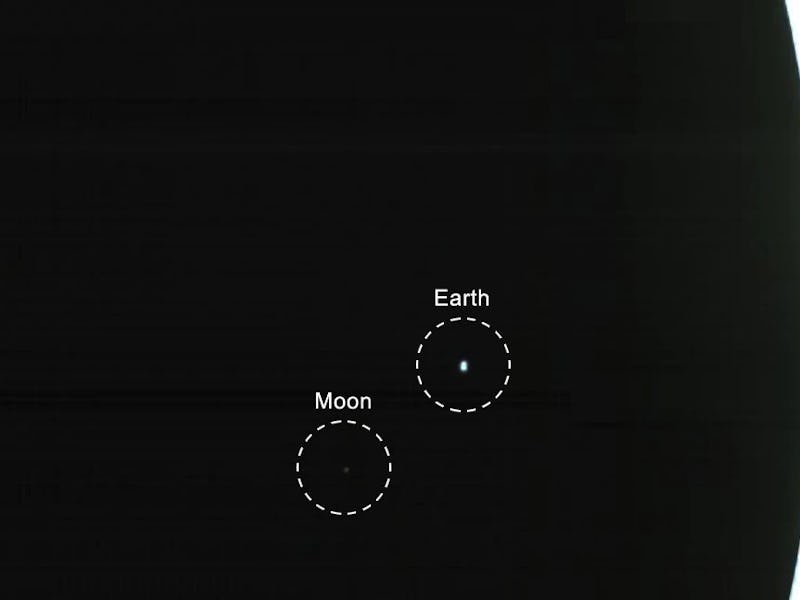
It’s hard not to get misty-eyed look at Voyager 1’s iconic 1990 photo of the solar system, dubbed the “Pale Blue Dot.” Twenty-eight years later, a small NASA satellite has updated that iconic photo with a snapshot of its own, and it’s seriously adorable.
On May 5, NASA launched its Mars InSight lander along with two Mars Cube One (MarCO) spacecraft, MarCO-A and B. The latter, nicknamed “Wall-E,” captured an image of Earth and the moon while it was floating over 621,000 miles from home. The result is predictably lovely.
“Consider it our homage to Voyager,” Andy Klesh, MarCO’s chief engineer at NASA’s Jet Propulsion Laboratory, Pasadena, California, says in a statement. “CubeSats have never gone this far into space before, so it’s a big milestone. Both our CubeSats are healthy and functioning properly. We’re looking forward to seeing them travel even farther.”
Pale Blue Dot 2.0
The original “Pale Blue Dot” was not taken by a suitcase-sized CubeSat. While the MarCO spacecraft are indeed the farthest-reaching CubeSats in space, they’ve got nothing on Voyager 1, one of NASA’s greatest workhorses. Currently, the spacecraft is traveling through interstellar space, where it’ll rendesvous with a star in about 40,000 years.
An artist's rendering of MarCOs, the cube sat that shot the photo of Earth released by NASA this week.
In his 1994 book The Pale Blue Dot, astronomer Carl Sagan waxed poetic about Voyager 1’s timeless portrait of our solar neighborhood:
“That’s here. That’s home. That’s us. On it everyone you love, everyone you know, everyone you ever heard of, every human being who ever was, lived out their lives … There is perhaps no better demonstration of the folly of human conceits than this distant image of our tiny world.”
The original Pale Blue Dot image
Now that MarCO has made their celebrity debut, the twin satellites will focus on helping out InSight, which is set to reach Mars in late November. The plan is for the CubeSats to get close enough to Mars so that they can beam back information about InSight’s descent into Mars’s atmosphere.
As the first CubeSats in deep space, these two are already off to a historic start. Plus, they’re so adorable they should be called CUTESATS! (I’m sorry, I’m trying to delete it.)
Listen to this: Theoretical astrophysicist Katie Mack talks black holes, dark matter, and the end of the universe: